Gooseville, WI
Hope, AZ
My first fall migration from the green lushness of Wisconsin to a dry isolated winter camp in the heart of the Sonoran Desert was an awesome adventure. My eyes were flooded with foreign flora, quirky fauna and mind-boggling geology. I am a raw rookie in the desert southwest, a newbie, an excited student ready to fly headlong into this odd prickly world filled with incredibly thorny stuff and enchanting critters.
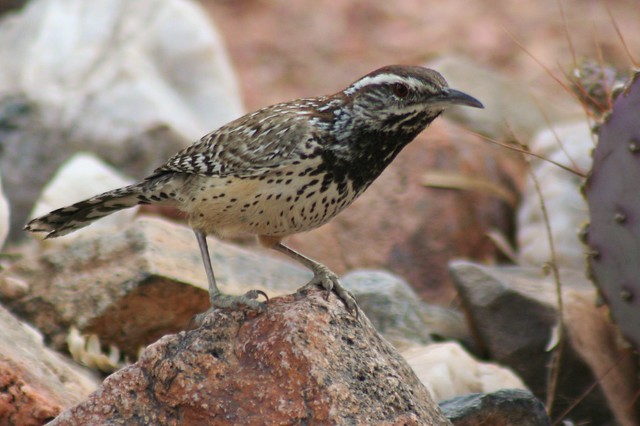
The Daily Bucket is a regular feature of the Backyard Science group. It is a place for the community to note any observations they have made of the natural world around them. Each note is a record that we can refer to in the future as we try to understand the patterns of the outdoors that are quietly unfolding around us.
I was still wrapping my clumsy tongue around unfamiliar words such as Ajo, cholla, jojoba and ocotillo when a stunning new visitor settled onto the crotch of a nearby saguaro.
‘rack! rack! rack! rack! rack!’
‘tek! TEK! tektektektektektektektek TEK! tektektek...’ The startling introduction trailed to a low growling chatter.
I’d been loudly scolded by a big brazen bird at least eight inches long, wearing a mottled black bib that flowed down its polka-dot breast. I noted the sweeping white eyestripe, and a long black and brown barred tail dipped in white.
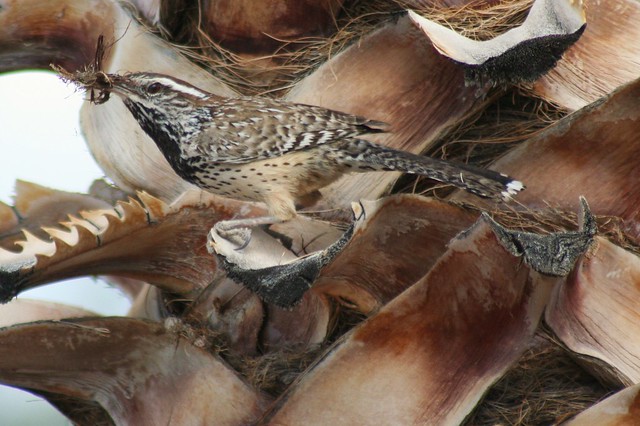 Giant mystery bird.
Giant mystery bird.
 I forgot to add that it sported dusty orange underpants.
I forgot to add that it sported dusty orange underpants.
This was a new one! An unknown.
A Thrasher? A Thrush?
Without internet or a cell tower connection, I furiously grabbed my new Peterson Field Guide to Birds of Western North America and exhausted my paging thumb and index finger.
 why would I look
why would I look
in the book
for a wren
when it looked like a thrush or a thrasher
tiny wrens that I know
have great voices for show
but this brute of a bird
was much brasher
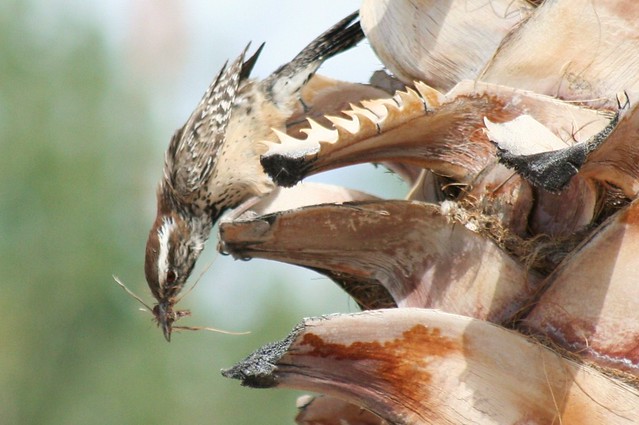 Cactus Wren (Campylorhynchus brunneicapillus)
Cactus Wren (Campylorhynchus brunneicapillus)
The local pair became regular camp visitors and boldly hopped in, out and under the vehicles. They were curious to explore lawn chairs, mirrors and empty shoes. Anything left outside was fair game.
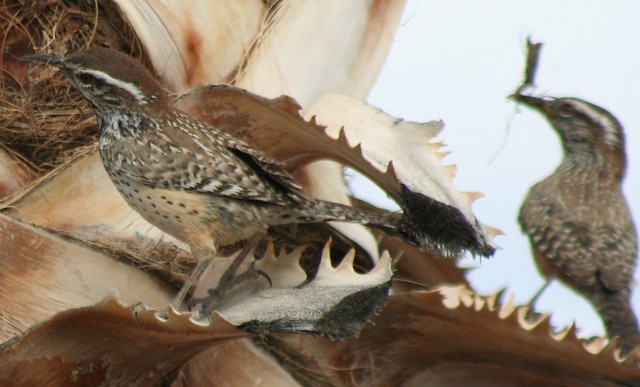 They mate for life and remain in the same territory.
They mate for life and remain in the same territory.
He was busy gathering fibers, feathers and sticks for a new second nest. She was sitting on eggs a few yards away in a palo verde tree in the first nest. They foraged the ground together turning over rocks and leaves, ignoring me.
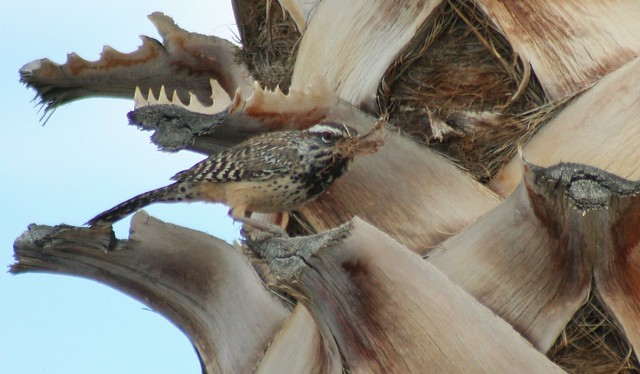 Largest wren in North America.
Largest wren in North America.
The nests are domed and shaped like large footballs. Typical of wrens, it’s stuffed full and overflowing with sticks.
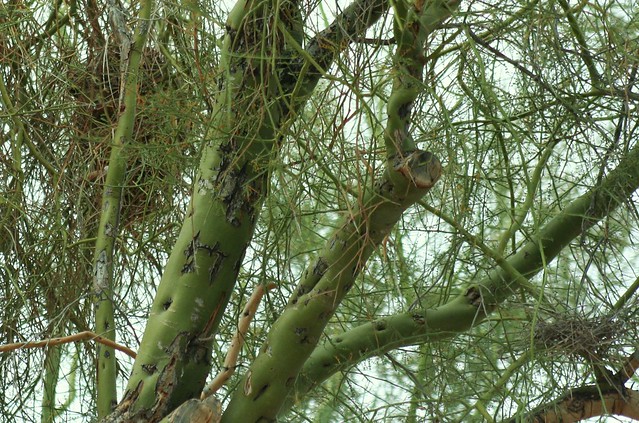 Large cactus wren nest (upper left) and a Eurasian collared dove nest (lower right).
Large cactus wren nest (upper left) and a Eurasian collared dove nest (lower right).
While she’s sitting on eggs in the first nest, he builds a second nest. He feeds the newly hatched chicks so she can lay and sit the second nest. They often manage a third successfully, too.
Who knew!
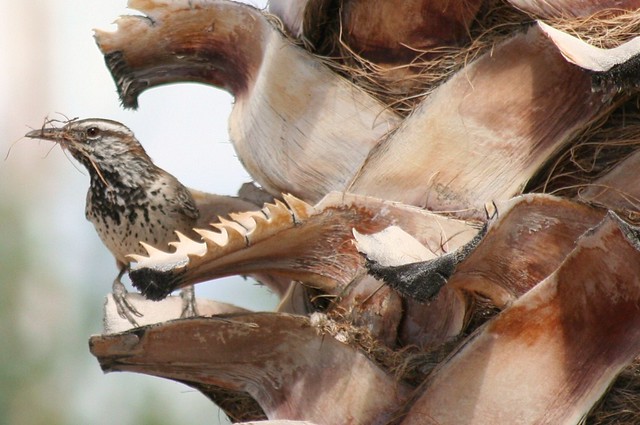 Building a second nest.
Building a second nest.
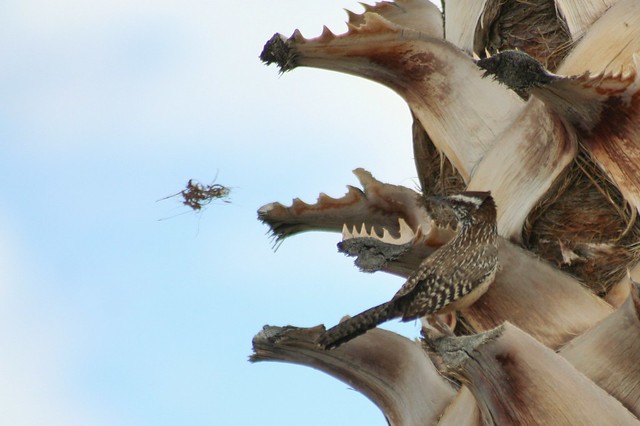 Oops... Dang wind!
Oops... Dang wind!
I hope you’re lucky enough to share a winter camp site with a pair of fearless, charming characters. You’re very welcome to fill this bucket with observations of the natural world around you. Got wrens?
Note: I’ve just now migrated back to Wisconsin for the summer. Upon leaving Hope, I leave you with this chuckle.
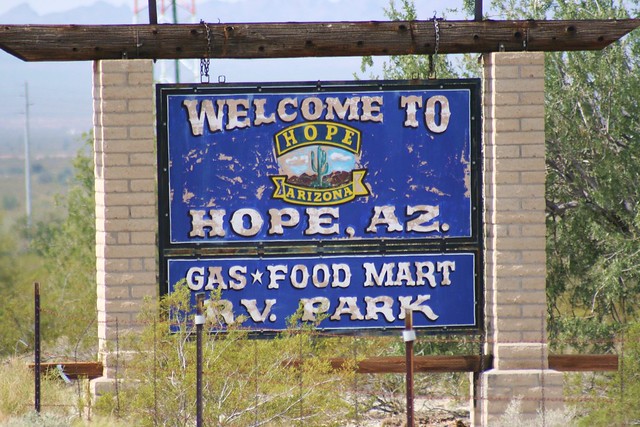 Don’t blink while driving through Hope or you’ll miss it.
Don’t blink while driving through Hope or you’ll miss it.
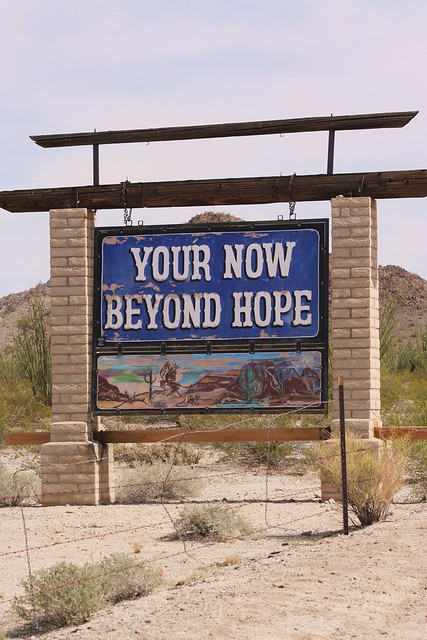
Open link in new tab
Open link in new ab
pen link in new tab
Open link in new tab



